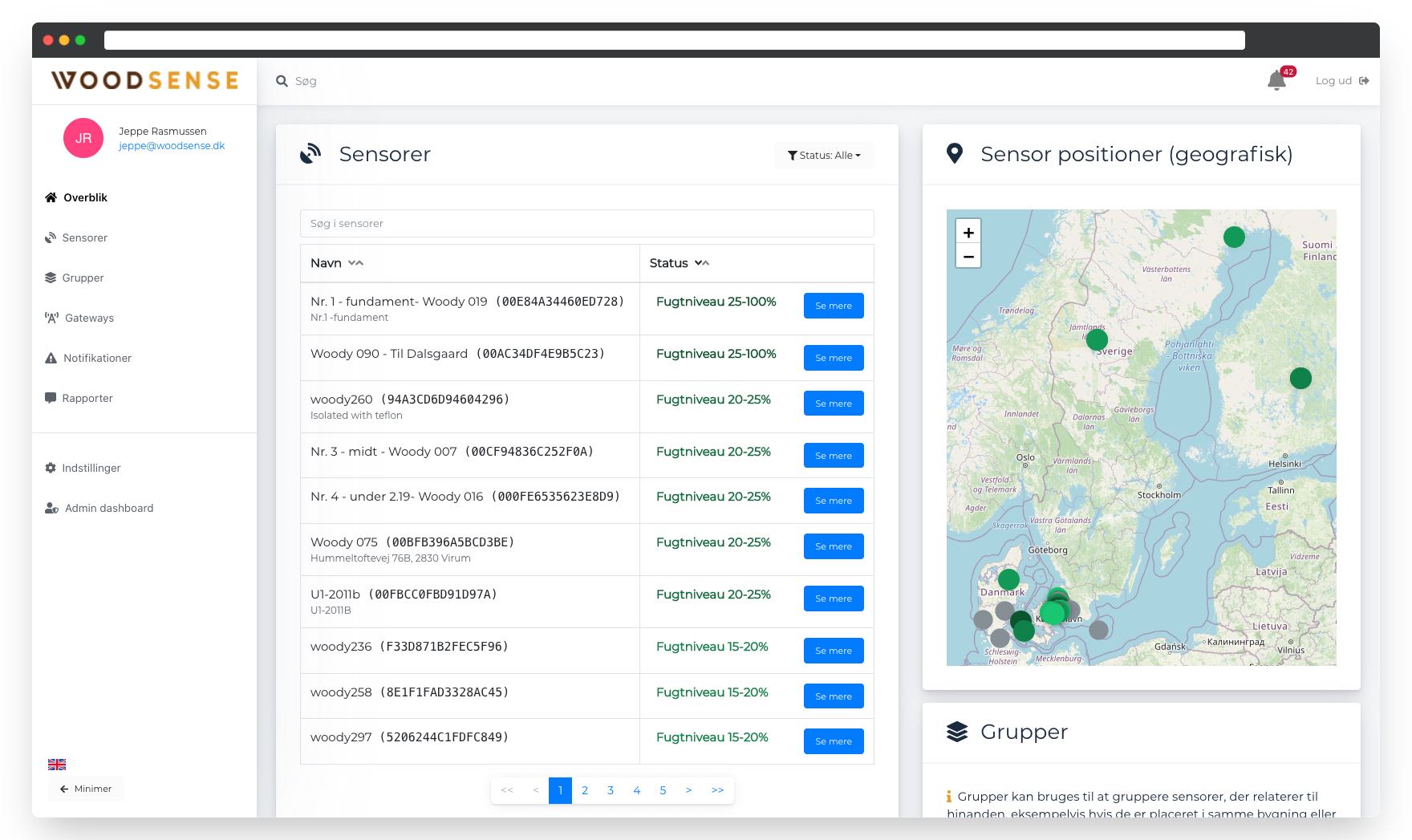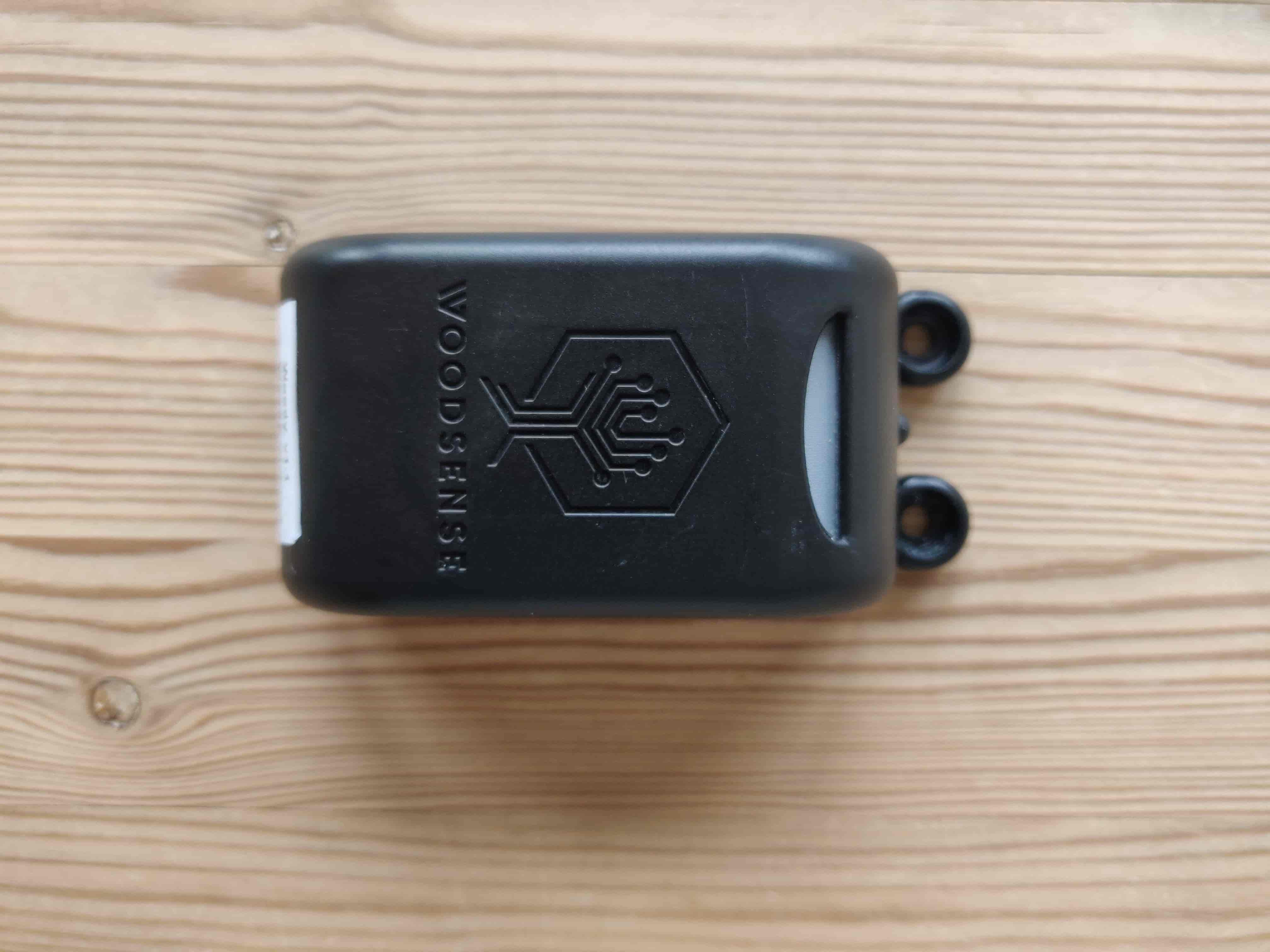
Monitor mold growth with Woodsense
This article attempts to describe how and why we want to avoid mold growth in our buildings, and how you can use Woodsense to preventively monitor the growth of mold.
What is mold?
Mold refers to a special group of fungi that lives by metabolizing organic material, and which we, among other things know from our everyday life in rotten foods. As buildings also consist of organic materials, including woodwork, wallpaper and paint, mold can grow and spread to the entire building given the right conditions.
Optimal conditions for mold growth
Mold thrives best on the surface of organic material in humid and hot conditions. Mold growth requires a relative humidity of at least 70%, and the optimal temperature range is between 20°C and 30°C, hence it is important to control and monitor the humidity in the building if you want to avoid mold growth. The growth stops if the temperature drops below 5 ° C or rises above 50 ° C, i.e. mold thrives in neither too cold nor too hot conditions [1].
Why is mold dangerous?
Even though mold doesn't degrade the materials on which they grow and thus doesn't reduce the strength of the structure on which they live, mold can in severe cases have several health-related consequences for those daily living or staying in the same environment as the fungus.
There are generally two ways in which mold can affect the air, namely when it grows and when it dries out (dies):
- As the mold grows, it secretes biologically active substances - so-called mycotoxins and emits spores into the air with the purpose of multiplying as far as possible. Both spores and mycotoxins can be spread through the air and through some building materials, and are thus undesirable in both open and closed parts of the structure [1].
- When the mold dries out and dies, dead mold spores are left behind, which can be whirled up into the air and inhaled by the people in the building, thus making contact with mucous membranes and airways [2]. Since this requires movement, dead mold is not an issue in closed parts of the structure.
Although it is not known exactly how much mold growth can be allowed in a building before it has negative effects on ones health, it is known that an excessive amount of mold can lead to health problems such as mucosal irritation, breathing problems, headaches and difficulty concentrating [3]. In addition, studies have shown that there's a big difference in people's sensitivity, and that specially children are more susceptible to mold than adults [4].
How do you detect mold?
There are many ways to test for mold if you suspect mold growth in the building. These include:
- Enzyme test
- Impression plates (AGAR)
- DNA test
- Material samples and tape prints
- Air analyzes
- Protein test
- Destructive condition examination
and in practice often consists of a combination of these [5]. In severe cases the mold is detected by visible inspection or by its distinctive strong heavy smell. However, it is important to emphasize that mold growth can occur on a broad scale without necessarily being visible to the naked eye [6].
How do you avoid mold?
If you want to avoid mold growth in your building, it is important to make the climatic conditions unfavorable for the mold so that the mold growth is minimized. Research shows that for every temperature there is a so-called “critical relative humidity” at which all values below this are too dry for mold growth to be present [7]. This value is given by the formula:

And it can be seen as the green line in Figure 1 below:

Similarly, for all values higher than this critical value, there is an estimated time for how long the environment in question can be allowed before mold growth is expected to occur. These curves are referred to as "mold curves".
In order to monitor these values, continuous measurements of temperature and humidity for the critical areas of a building are necessary. This can easily be achieved by installing wireless sensors.
Learn more about how you can easily install a moisture meter in your building that can be used for preventive monitoring of mold growth.
Monitoring mold growth with Woodsense
On the Woodsense platform we have integrated the so-called mold curves derived from the mathematical model from the research in the field. These are among other things used to visualize the environment of a given sensor and to determine the risk of mold growth as seen in Figure 2 below:

Furthermore the models are used to notify about critical conditions for the sensor's environment.
How do you fight mold?
When mold infestation has been detected and the cause is removed the infested areas should be cleaned. There are several cleansing methods that can be used for different situations. These methods include:
- Demolition and disposal
- Mechanical cleaning
- Cleaning using dry ice
- Chemical cleaning
- Fog cleaning
- Fire
- Dry steam cleaning
The method of choice depends on i.e. the scope, location and material [8].
References
[1]: BYG-ERFA: Skimmel i bygninger – vækstbetingelser og forebyggelse
[2]: Sundhedsstyrelsen: Helbredsproblemer ved fugt og skimmelsvampe i bygninger
[3]: Kathrine Birkemark Olesen, Centerchef for Indeklima & Bygningsundersøgelser hos Teknologisk Institut
[5]: Skimmelsvampe - Måling og analyse
[8]: Byggesagkyndig.nu - Afrensning og rengøring af skimmelsvamp
If you have any questions please write to info@woodsense.dk or call us on 42838752.



